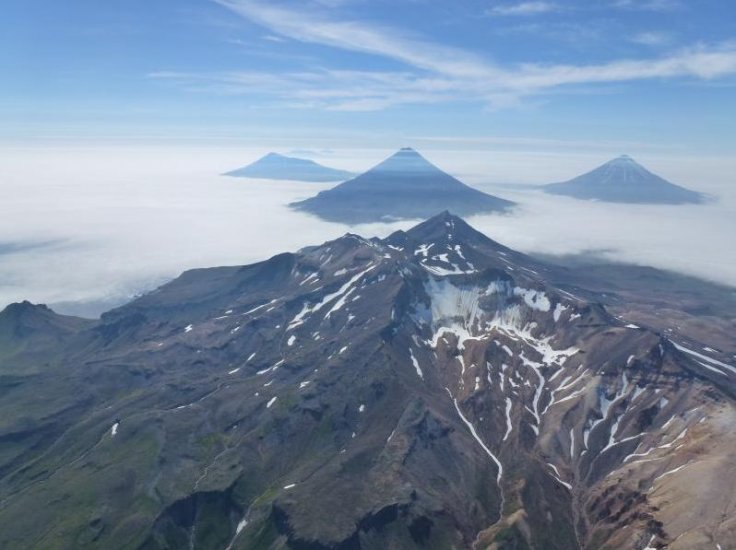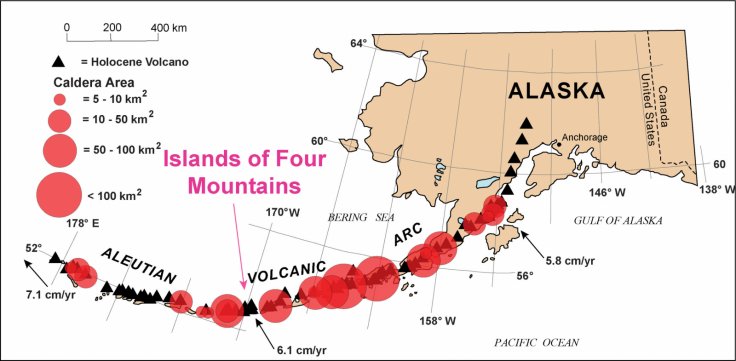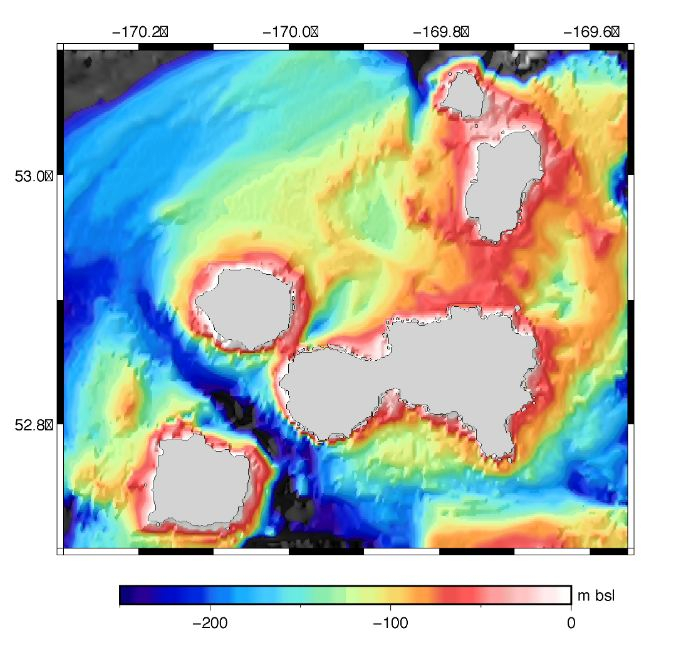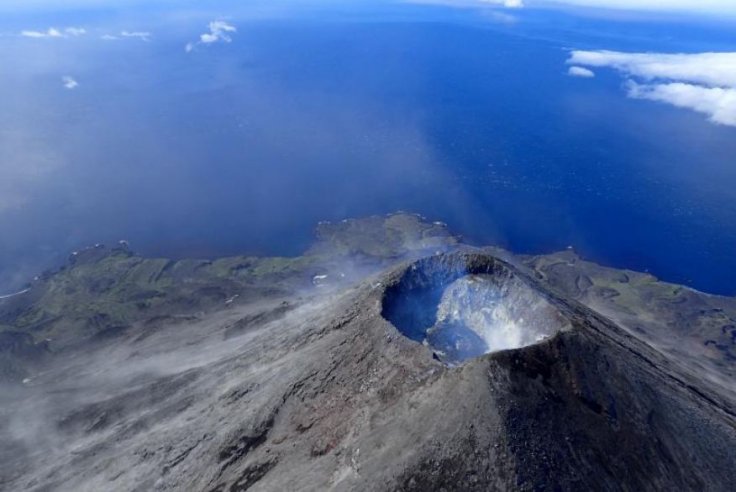Having been around only for a few thousand years, it is safe to say that human beings have only managed to scratch the surface of Earth's never-ending secrets. However, that has not stopped mankind from trying. Taking one step closer to uncovering one such enigma, scientists have found that a small cluster of Alaskan islands could be part of one massive underwater supervolcano.
According to a multi-disciplinary team of scientists from multiple institutions, a small group of islands known as 'The Islands of the Four Mountains' in Alaska's Aleutian chain, could be part of a single large volcano, as powerful as the famous Yellowstone Caldera, whose super-eruptions can have global ramifications.
Stratovolcanoes and Calderas

The Islands of the Four Mountains are a group of six closely-situated stratovolcanoes in the Aleutian chains of islands in the Pacific Ocean. Stratovolcanoes are volcanoes that are characterized by their steep sides whose top ends with a 'summit'. They are formed by numerous 'strata' or layers of hardened lava. Mount Pinatubo in the Philippines, and Mount St. Helens in the US, are two stratovolcanoes that have erupted in the last the 50 years.
Named, Uliaga, Tana, Kagamil, Herbert, Cleveland, and Carlisle, the six volcanoes in the Aleutian cluster are suspected to belong to one interconnected caldera. A caldera is a cauldron or bowl-like formation that is created when large amounts of magma are expelled when the pressure of the magma chamber beneath the surface exceeds the stability of the crust. The explosive and catastrophic expulsion of massive amounts of lava and ash leads to the downward collapse of the chamber's walls.

Unlike stratovolcanoes, where small to medium-sized reservoirs of magma are vented with potentially less fatal damage, eruptions that lead to the formation of a caldera can be disastrous beyond measure. For example, the gas and ash discharged into the atmosphere can impact the Earth's climate adversely.
A Supervolcano Hidden Underwater?
In order to gain a better understanding of the disposition of the Islands of the Four Mountains, scientists have been studying, Mount Cleveland—the most active volcano of the six. The data gathered so far has strengthened the hypothesis that the islands could indeed be a single interlinked caldera.

Referring to the challenges associated with conducting research in such an isolated location, Diana Roman, co-author of the study, said in a statement, "We've been scraping under the couch cushions for data. But everything we look at lines up with a caldera in this region."
Interestingly, Mount Okmok, caldera on the nearby Umnak Island in the Aleutian chain, had erupted in 43 BC. If the existence of the Islands of the Four Mountains caldera is confirmed, it could much larger than Okmok. Roman emphasized that the new caldera would also become the first to be hidden underwater in the Aleutians if it is confirmed to exist.
Potential Explanation for Regional Volcanic Activity

While the caldera hypothesis is gaining acceptance, its existence has not been proven unequivocally yet stress the authors. To be able to conclusively confirm the caldera's presence, the scientists will have to visit the islands again to collect data that can add credence to their hypothesis.
"Our hope is to return to the Islands of Four Mountains and look more closely at the seafloor, study the volcanic rocks in greater detail, collect more seismic and gravity data, and sample many more of the geothermal areas," added Roman.

However, if proven, the caldera hypothesis can help expound the frequency of Mount Cleveland's explosive activity. It is important to note that Mount Cleveland has been possibly the most active volcano in North America in the last two decades. So far, it has created ash clouds reaching heights of 15,000 and 30,000 feet above sea level, thereby, posing serious threats to planes.
"It does potentially help us understand what makes Cleveland so active. It can also help us understand what type of eruptions to expect in the future and better prepare for their hazards," concluded John Power, lead author of the study.









